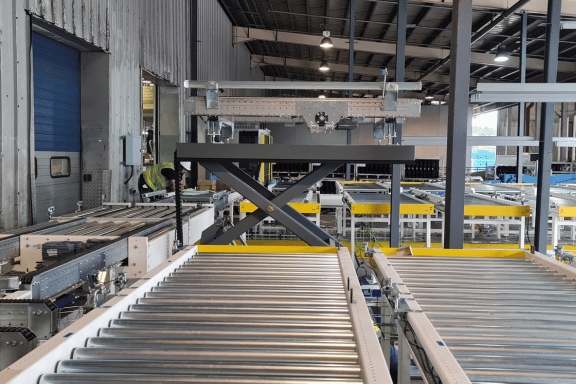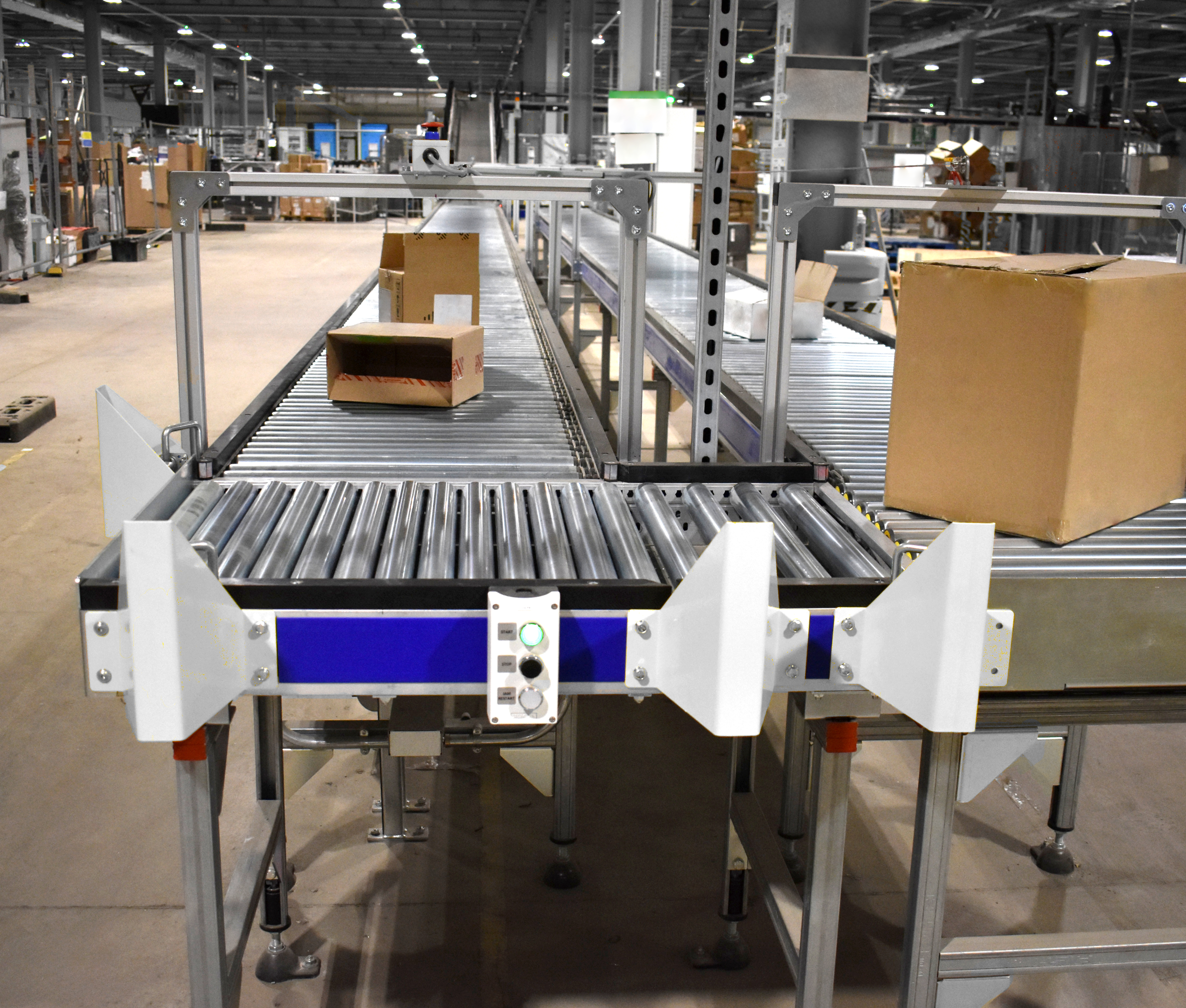Pallet conveyors have become an indispensable solution in manufacturing, logistics, and warehousing sectors, offering unparalleled efficiency for material handling. These conveyor systems are designed to move heavy pallets seamlessly across production lines, storage facilities, and distribution centers, improving productivity and safety in handling bulky loads. This blog explores the various types of pallet conveyors, their benefits, applications, and factors to consider when choosing the right conveyor system for your business.
What is a Pallet Conveyor?
A pallet conveyor is a system designed specifically for moving pallets—a common platform used to carry goods in bulk. Unlike traditional conveyor belts that handle smaller packages, pallet conveyors are robust and capable of handling heavy loads, making them ideal for industries that rely on large-scale goods transportation, like automotive, retail, manufacturing, and food and beverage processing.
Types of Pallet Conveyors
-
Roller Conveyors Roller conveyors use a series of rollers to move pallets along a pathway. They can be powered or gravity-fed:
- Powered roller conveyors use motors to drive the rollers, providing a steady flow of pallets.
- Gravity roller conveyors rely on gravity and the natural momentum of pallets, making them ideal for short distances and slight declines.
-
Chain Conveyors Chain conveyors are ideal for handling heavy-duty pallets with solid bottom surfaces. Chains run through the conveyor bed, pulling pallets along with great precision. These are particularly useful in high-load applications or in industries with rugged or non-standard pallets.
-
Drag Chain Conveyors Similar to chain conveyors but designed for harsher environments, drag chain conveyors can handle loads even in dusty or extreme conditions. They’re typically used in industries like metalworking or mining.
-
Transfer Conveyors Transfer conveyors are specialized units that allow pallets to move between different conveyor lines or change direction. Often combined with roller or chain conveyors, transfer conveyors streamline operations in large warehouses with complex layouts.
-
Turntable Conveyors These conveyors rotate pallets as needed, typically in 90- or 180-degree increments, to reorient loads on production or packaging lines.
Benefits of Using Pallet Conveyors
-
Increased Efficiency Pallet conveyors allow for smooth and continuous movement of heavy loads, reducing the need for manual labor and minimizing time spent on transporting materials.
-
Enhanced Safety By automating pallet movement, conveyors help reduce workplace injuries associated with manual lifting and carrying of heavy items, ensuring a safer work environment.
-
Cost-Effective While pallet conveyors represent an upfront investment, they significantly lower operational costs by reducing reliance on manual labor, accelerating throughput, and lowering risks associated with load damage.
-
Scalability These conveyors can be customized to fit any warehouse or facility size, making them an ideal solution for both small businesses and large-scale operations.
-
Improved Accuracy Pallet conveyors offer precise control over material movement, helping maintain inventory accuracy and reducing errors in shipment and handling.
Applications of Pallet Conveyors
Pallet conveyors are used in diverse industries due to their flexibility and efficiency:
- Manufacturing: Transport raw materials and finished goods across assembly lines or between workstations.
- Logistics and Distribution: Streamline order processing by quickly moving large quantities of goods in distribution centers.
- Retail Warehousing: Efficiently handle products for order fulfillment, packaging, and shipping in high-volume e-commerce environments.
- Food and Beverage: Safely move bulk materials and packaged products under sanitary conditions, from production to packaging.
- Automotive: Transport heavy components like engines, tires, and assemblies in production and assembly plants.
Key Considerations When Choosing a Pallet Conveyor System
-
Load Capacity Evaluate the weight of the pallets your conveyor system will handle. Different conveyor types are optimized for various weight capacities.
-
Space Requirements Measure your facility’s space to determine the optimal conveyor configuration—this will impact the type of system you select.
-
Environmental Conditions Harsh environments, such as those with dust or moisture, require conveyors with special materials or designs to withstand the conditions.
-
Speed and Throughput Consider the desired pace of operations. High-speed conveyors are beneficial for industries with tight schedules and high throughput demands.
-
Maintenance and Durability A reliable system is essential. Look for conveyors with low maintenance needs and durable components to reduce downtime and operational costs.
-
Customization Options Some industries have specific needs that may require a tailored conveyor system. Many suppliers offer modular or custom configurations to meet unique demands.
Conclusion
Investing in a pallet conveyor system can transform your material handling operations by improving efficiency, safety, and scalability. By carefully assessing your needs and facility requirements, you can select a pallet conveyor system that maximizes productivity and optimizes the flow of goods within your business. Whether in a small warehouse or a large distribution center, the right pallet conveyor system is a powerful tool for any modern operation looking to streamline processes and drive growth.






